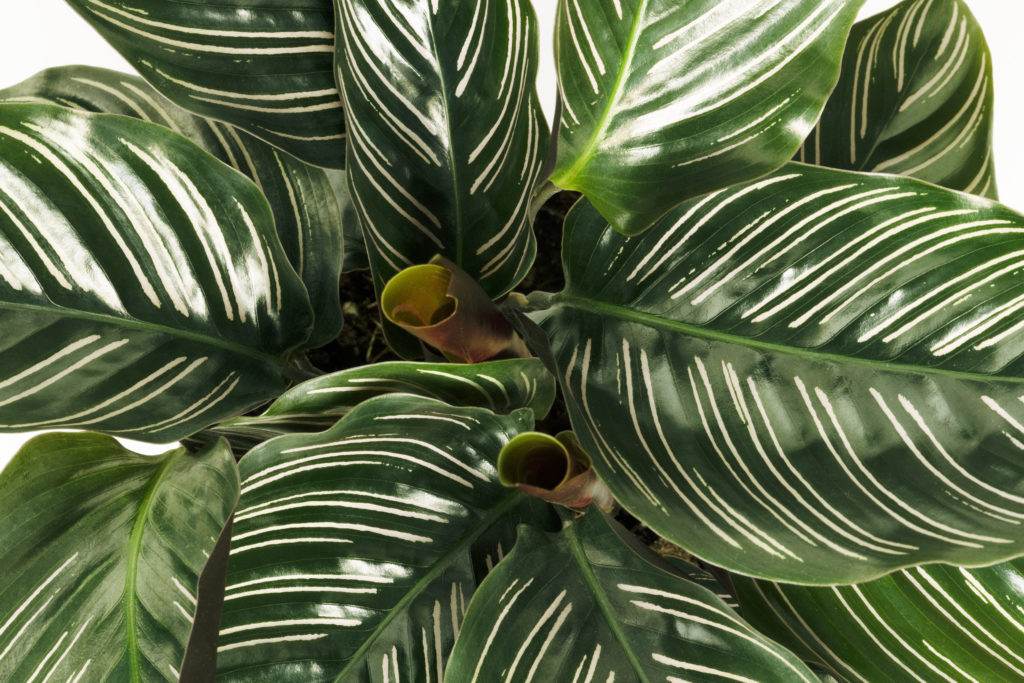
These beautiful houseplants come in a variety of shapes, sizes, and colors. Calathea leaves can be long and thin with dark marks and purple undersides or can be large, round, and stripped in cream or white. But no matter the variety, they will look great in any area of the home or office that has medium light, moderate temperature, and humidity. These beautiful houseplants hail from the rainforest, so they love plenty of moisture and humidity. Place the plant among other plants so they can feed off of each other’s humidity as they breathe or place the plant on a humidity tray. Water the soil when the top inch feels dry to the touch. Calatheas dramatically wilt if they are not watered, letting you know they have suffered neglect. They tend to be temperamental, especially if they do not get consistent water. On the other hand, they do not like to have wet feet or be left to soak in soil that is too wet for extended periods.
Calatheas are moderate growers. They grow modestly in medium to low light conditions, so transplanting them is usually not an immediate concern. When transplanting, though, select a pot that is about three inches in diameter larger than the current container. Make sure it has good drainage. Use a potting soil specially formulated for indoor plants when doing your repotting.
Note: These plants are grown for decorative purposes and are not intended for human or animal consumption
FAST FACTS
Outstanding Features: Attractive foliage, highly collectible

Common Name
Calathea

Bloom Colors
None

Water
Moderately and consistently moist

Zone
Houseplant

Fertilizer
Well-balanced fertilizer throughout the growing season

Scientific Name
Calathea spp.

Light
Medium light

Size
Varies depending on the variety

Overwintering
Houseplant; none necessary

Companion Plants
Peace lily, fern, maranta